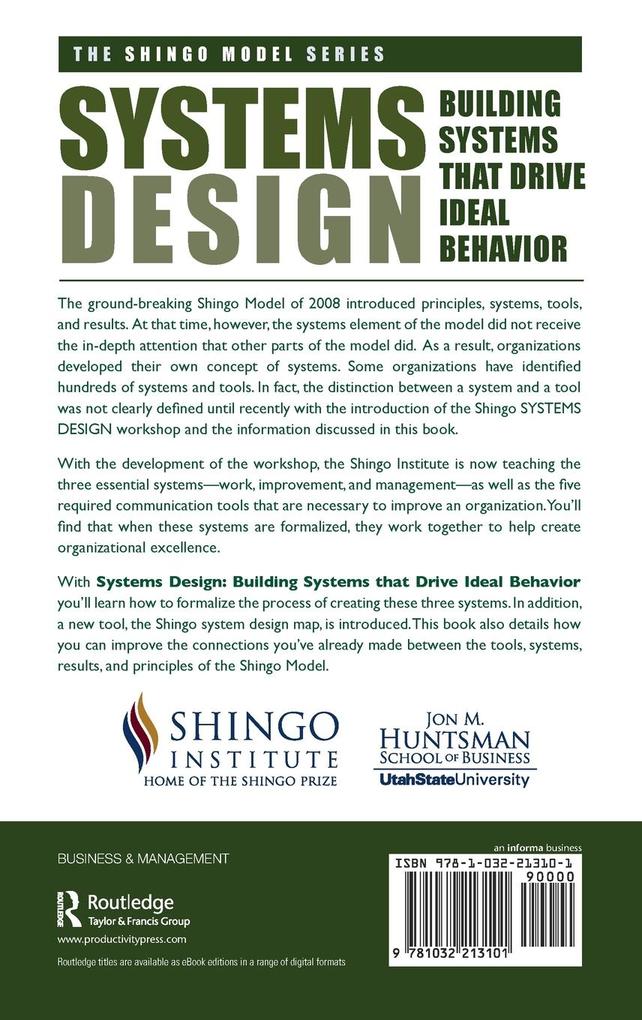
Zustellung: Mi, 02.07. - Sa, 05.07.
Versand in 1-2 Wochen
VersandkostenfreiBestellen & in Filiale abholen:
The ground-breaking Shingo Model of 2008 introduced principles, systems, tools, and results. At that time, however, the systems element of the model did not receive the in-depth attention that other parts of the model did. As a result, organizations developed their own concept of systems. Some organizations have identified hundreds of systems and tools. In fact, the distinction between a system and a tool was not clearly defined until recently with the introduction of the Shingo SYSTEMS DESIGN workshop and the information discussed in this book.
With the development of the workshop, the Shingo Institute is now teaching the three essential systems-work, improvement, and management-as well as the five required communication tools that are necessary to improve an organization. You'll find that when these systems are formalized, they work together to help create organizational excellence.
With Systems Design: Building Systems that Drive Ideal Behavior you'll learn how to formalize the process of creating these three systems. In addition, a new tool, the Shingo system design map, is introduced. This book also details how you can improve the connections you've already made between the tools, systems, results, and principles of the Shingo Model.
With the development of the workshop, the Shingo Institute is now teaching the three essential systems-work, improvement, and management-as well as the five required communication tools that are necessary to improve an organization. You'll find that when these systems are formalized, they work together to help create organizational excellence.
With Systems Design: Building Systems that Drive Ideal Behavior you'll learn how to formalize the process of creating these three systems. In addition, a new tool, the Shingo system design map, is introduced. This book also details how you can improve the connections you've already made between the tools, systems, results, and principles of the Shingo Model.
Inhaltsverzeichnis
Chapter 1: Organizational Excellence and the Shingo Institute Chapter 2: Systems Overview Chapter 3: Three Essential Systems Chapter 4: Five Required Tools Chapter 5: What Do We Mean by System Design? Chapter 6: Work Systems Chapter 7: Improvement Systems Chapter 8: Management Systems Chapter 9: Case Studies Chapter 10: Results Chapter 11: System Thinking
Produktdetails
Erscheinungsdatum
15. April 2022
Sprache
englisch
Seitenanzahl
164
Herausgegeben von
April A. Bosworth, Brent R. Allen
Verlag/Hersteller
Produktart
gebunden
Gewicht
417 g
Größe (L/B/H)
240/161/14 mm
ISBN
9781032213101
Entdecken Sie mehr
Bewertungen
0 Bewertungen
Es wurden noch keine Bewertungen abgegeben. Schreiben Sie die erste Bewertung zu "Systems Design" und helfen Sie damit anderen bei der Kaufentscheidung.










